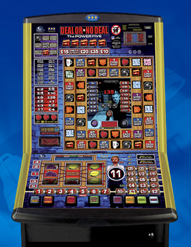Fruit machines

Charles Fey: The first inventor
When a man from San Francisco invented the first slot machine in the year 1894, it changed the world of gaming. Although it took Fey over ten years to come up with innovative modifications and better versions of his original design-Fey was keen on putting his machines in places where players could test it and win.
The evolution of slot machines has significantly shaped the gaming landscape since their inception. Charles Fey's innovative design in 1894 laid the groundwork for modern gaming, captivating players with its simple yet engaging mechanics. The story continues with advancements over the decades, as each new iteration enhanced player experiences. Today, slot machines are a cornerstone of casinos, generating substantial revenue and drawing in thousands of enthusiasts. For insight into the current trends and exciting developments in the world of slots, make sure to read more at slots-madness-canada.com, where you can discover the latest innovations and game mechanics in this dynamic industry.
After growing up in Vohrigen, Bavaria, Fey who came from a family of limited movies moved to San Francisco at the age of 23. It was at the CEW (California Electric Work), where Fey had begun to work, where Theodore Holtz, who would become Fey's partner in future, met Fey. Both Holtz and Fey came up with the 4-11-44, the first slot machine which has undergone little change till today.
The earlier machines were not as primitive or old fashioned as it is believed; the only difference lay in the symbols. While there were three reels in Fey's machine, the card symbols were still used. A bell would ring if a player ended up with the right winning combination, which was how one won in Fey's game. New Nickel Machines, as they were called, were popular during the 1887.
In 1907, Fey, who had by now was conviction that the gaming industry had an amazing potential, joined the Mills Novelty Company, where finally the Mills Liberty Bell was created. The Operator Bell came subsequently after a few years, which weighed up t0 100 pounds, and a humongous number of them were sold in San Francisco.
In 1915, lighter versions were developed by the Mills Company, although the still was still majorly based on the design of Fey's machine. Owing to their better quietness, these were called The Silent Bells. Changes made included the Double Jackpot and other modifications.
The Anti Gambling Movement
The bad times for the gambling industry came in the earlier 20th century, with what is infamously called as the Anti-Gambling Movement, which gained momentum in San Francisco. Slots were illegalized, and went underground.
The popularity of slots amongst masses went down due to technological developments, and the Nevada Electronics Twenty-One Machine which had chairs for two to four persons came in 1964. Cheating slots became much more difficult owing to the placement of microprocessors that reduced the size of the slots.
Slots account for earning the casino its half income; and are significant to a casino's business.
The Electric Age
The first slot video machine was introduced in 1975 by Fortune Coin Company, although these weren't an instant hit. After a buy-out by the International Gaming Technology, video slots were improved and gained popularity. Megabucks was the final things; after which small jackpots were reduced in their significance.
